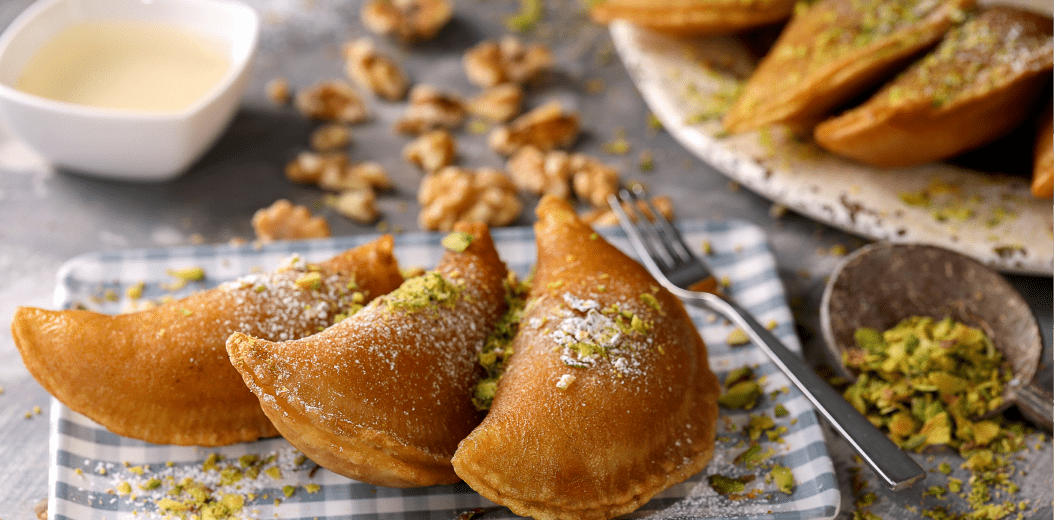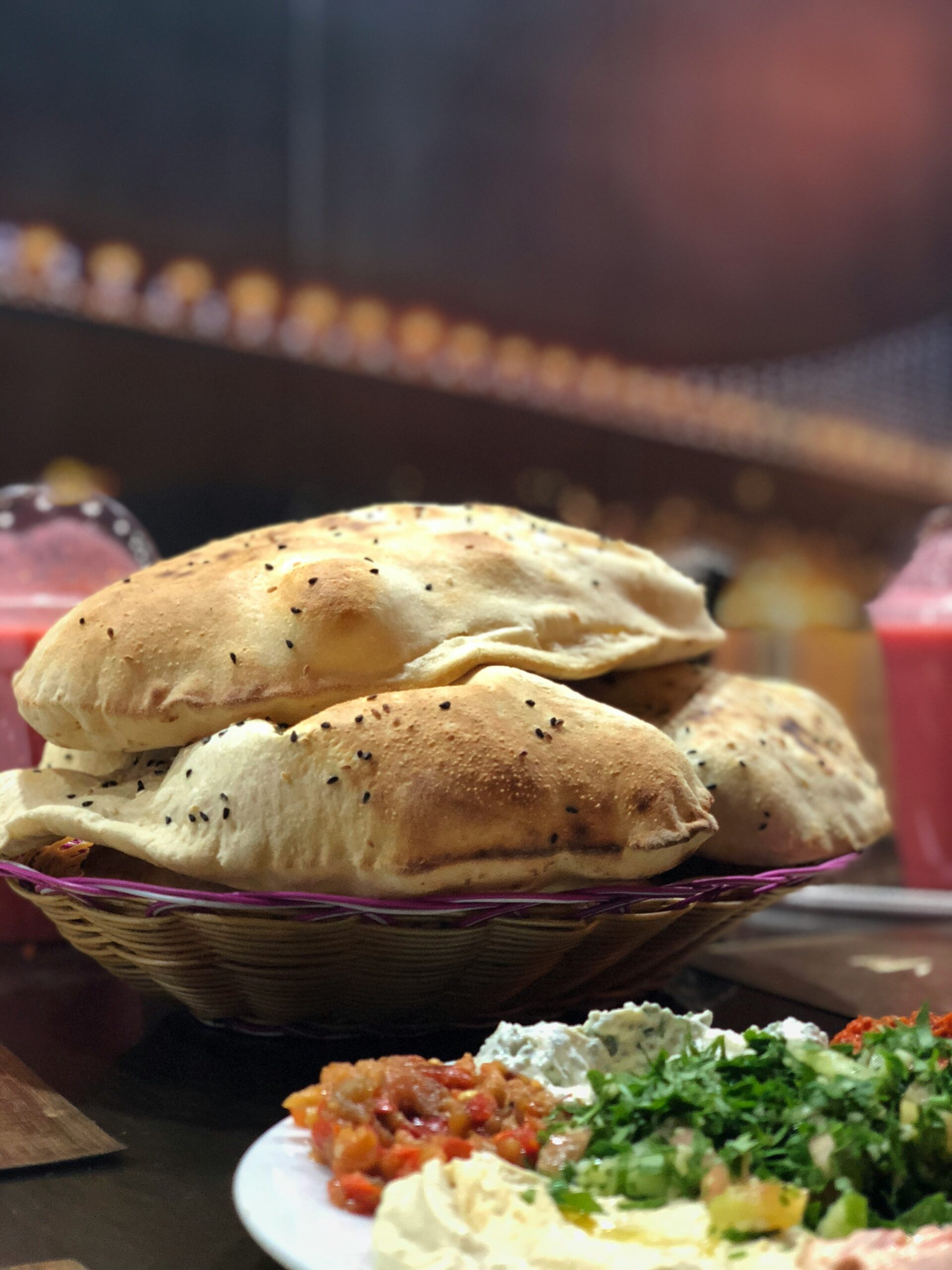The streets of Saudi Arabia glow with lanterns, the scent of cardamom and honey drifting from homes where families prepare for iftar. Laughter and anticipation fill the air as tables are laid with steaming plates of Saudi desserts in Ramadan, a tradition as cherished as the fast itself. In this sacred month, sweets are more than just indulgences. They are a bridge to the past, a taste of heritage, and a symbol of hospitality. Each bite carries the warmth of family, the richness of culture, and the sweetness of shared moments.
A Sweet Tradition: Saudi Ramadan Desserts
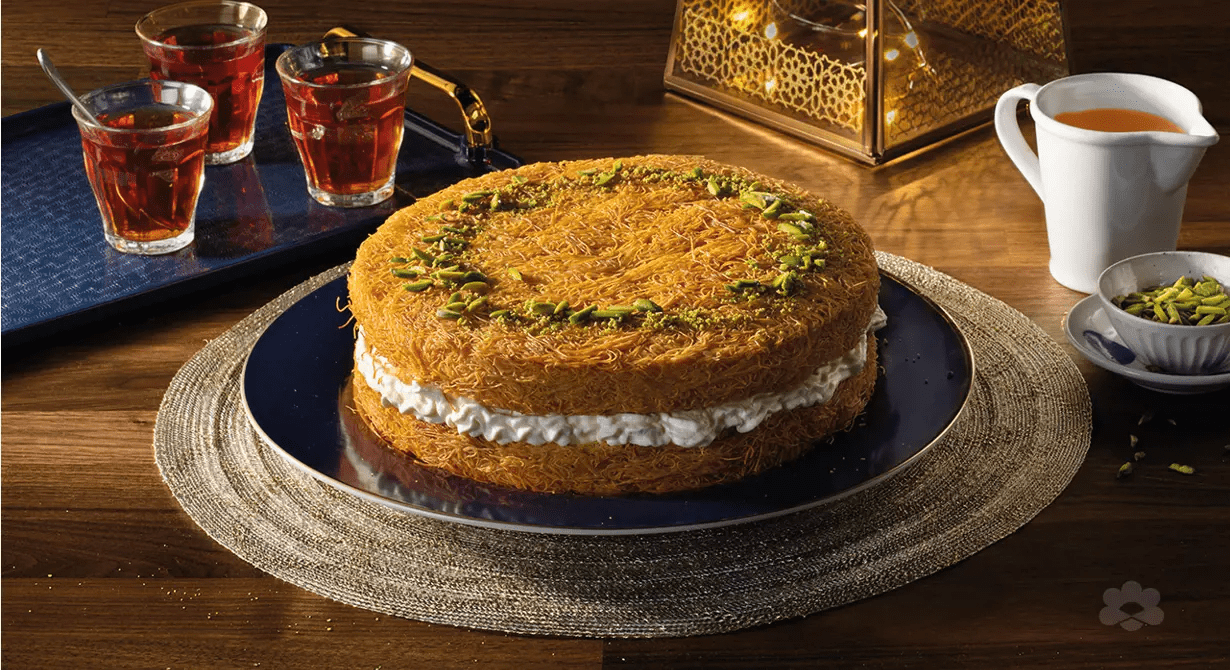
Ramadan in Saudi Arabia isn’t just about fasting from sunrise to sunset. It’s about reconnecting with culture, family, and faith. And what better way to do that than through traditional Saudi sweets that have stood the test of time? From crispy, golden Luqaimat dripping in syrup to the delicate, date-filled Ma’amoul, every dessert will transport you to a world of flavors.
Luqaimat – The Golden Dumplings
One of the most famous Ramadan desserts in Saudi Arabia is Luqaimat, bite-sized dumplings that are crisp on the outside and soft on the inside. These deep-fried dough balls are soaked in honey or date syrup, making them irresistibly sweet.
Luqaimat dates back centuries, often linked to Bedouin traditions where simple ingredients created deeply satisfying treats. While modern versions include toppings like Nutella or Lotus Biscoff, nothing beats the classic honey-drizzled Luqaimat served with Arabic coffee.
Pro Tip: The secret to perfect Luqaimat? Let the dough rest and use a piping bag for even-sized dumplings. This ensures they turn out crispy yet airy inside.
Qatayef – The Ramadan Pancakes
No discussion on Saudi sweets for Ramadan is complete without mentioning Qatayef, the crescent-shaped pancakes filled with cheese or nuts. These treats, popular across the Middle East, have a special place on Saudi iftar tables.
In Saudi Arabia, Qatayef is traditionally fried and dipped in syrup, giving it a rich, indulgent taste. Some variations are baked, offering a slightly lighter version. The nut-stuffed Qatayef pairs beautifully with a cup of mint tea, making it a perfect post-iftar delight.
Ma’amoul – The Festive Cookies
If there’s one dessert that signals the arrival of Eid Al-Fitr, it’s Ma’amoul. These shortbread-like cookies are filled with dates, pistachios, or walnuts and dusted with powdered sugar. Ma’amoul is a labor of love, often prepared in the days leading up to Eid, with families gathering to shape and bake them together.
Pro Tip: Use wooden molds to create intricate patterns on the cookies. Keeping the dough chilled before baking ensures a crumbly, melt-in-your-mouth texture.
Regional Specialties: Unique Ramadan Sweets from Different Regions of Saudi Arabia
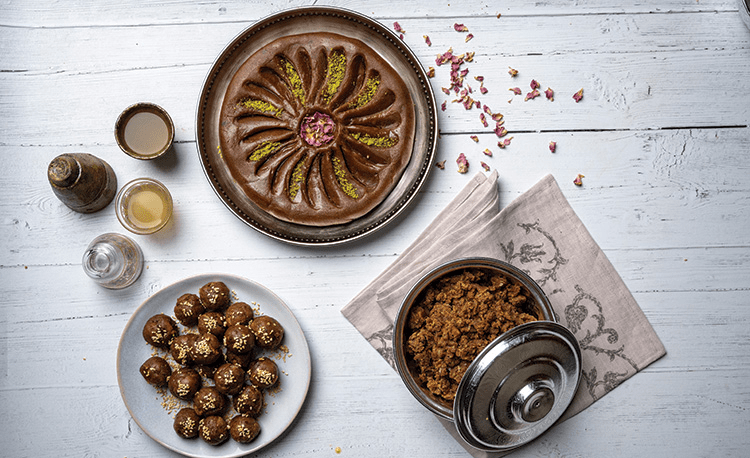
Saudi Arabia’s diverse regions bring their own special touch to Ramadan sweets and desserts. Each province has desserts that reflect local ingredients and traditions.
Najd (Central Region): Maqshush & Hanini
Maqshush, often called Saudi Arabia’s national dessert, is made from buckwheat, cardamom, and topped with ghee, honey, or date molasses. This warm and hearty dish is a staple during Ramadan.
Another Najdi favorite is Hanini, a comforting blend of dates, brown flour, and spices like saffron and cardamom. This dessert is often enjoyed after Taraweeh prayers, offering warmth and energy.
Hijaz (Western Region): Kunafa & Lahooh
In the coastal Hijazi region, Kunafa takes on a unique twist. Unlike the Levantine version, Hijazi Kunafa sometimes features banana, almonds, and layers of cream, creating a rich and indulgent dessert.
Another lesser-known treat is Lahooh, a crepe-like dessert made from brown flour and layered with melted butter and sugar. It’s light, slightly sweet, and pairs wonderfully with tea.
Eastern Province: Al-Mamrous
Hailing from Al-Ahsa, Al-Mamrous is a traditional dessert made by mashing dates with flour and ghee. This rustic, hands-on preparation method results in a naturally sweet, nutrient-rich treat that embodies the region’s deep-rooted date-farming culture.
Perfect Pairings: The Best Drinks to Enjoy with Saudi Desserts in Ramadan
No Saudi dessert in Ramadan is complete without the perfect drink to complement its flavors. Whether you prefer something warm and spiced or cool and refreshing, these traditional beverages enhance every bite:
Arabic Coffee (Gahwa) – The bold, cardamom-infused taste balances the sweetness of Luqaimat and Ma’amoul.
Saffron Milk – A warm, fragrant drink that pairs beautifully with date-based sweets like Hanini.
Mint Tea – Light and refreshing, ideal for cutting through the richness of Kunafa and Qatayef.
Tamarind Juice (Tamr Hindi) – A tangy contrast to the deep, syrupy flavors of traditional desserts.
Jallab – A date and grape molasses drink topped with pine nuts, enhancing the nutty flavors in Ma’amoul and Qatayef.
These classic pairings create a balanced experience, letting the flavors shine while making Iftar even more special.
Modern Twists on Traditional Ramadan Desserts
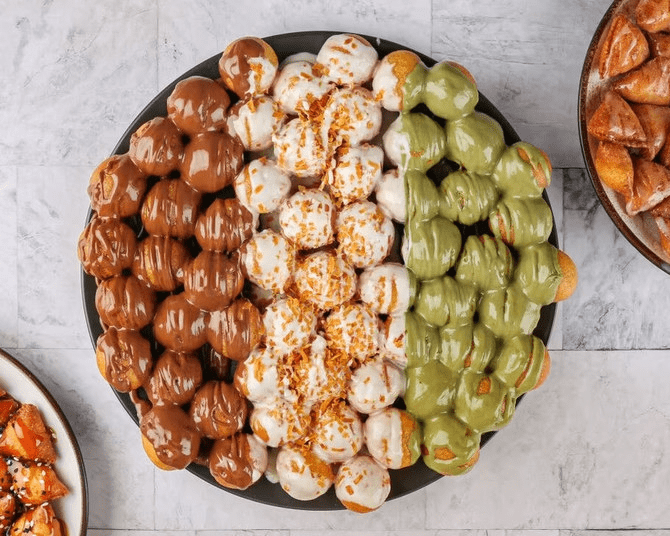
Saudi Arabia’s Ramadan food scene is evolving, blending traditional recipes with modern flavors. Many households and bakeries are experimenting with new twists on old favorites.
- Chocolate Luqaimat: Drizzled with Belgian chocolate or caramel for a contemporary twist.
- Stuffed Qatayef: Infused with cream cheese, Nutella, or even pistachio mousse.
- Tawa Sweet: A crunchy new favorite made from brown flour, milk powder, and yeast.
Even Middle Eastern desserts like Basbousa (sweet semolina cake) and Umm Ali (Egyptian bread pudding) are gaining popularity in Saudi households, blending cultural influences across the Islamic world.
Healthier Alternatives to Traditional Ramadan Desserts
While Saudi desserts in Ramadan are rich and indulgent, there are lighter options that still satisfy your sweet tooth without overloading on sugar.
Date Energy Bites – Blended dates, nuts, and coconut flakes for a natural, nutrient-packed treat.
Baked Qatayef – A lighter version of the classic, filled with ricotta and honey instead of deep-fried.
Fruit-Based Sweets – Fresh figs, pomegranates, and dates drizzled with tahini offer a refreshing alternative.
Milk-Based Desserts – Muhallabia, a silky milk pudding, provides sweetness without excess sugar.
Whole Wheat Ma’amoul – Swapping refined flour for whole wheat adds fiber while keeping the traditional flavors intact.
These alternatives let you enjoy the essence of Ramadan sweets while maintaining balance.
The Cultural Significance of Saudi Ramadan Desserts
As the night deepens and families gather in the warm glow of their homes, Saudi desserts in Ramadan take center stage. A grandmother carefully rolls Ma’amoul dough, her fingers moving with practiced ease. Children watch in anticipation as Luqaimat sizzle in hot oil, waiting for that first golden bite. These sweets are more than just food. They are part of a tradition that binds generations together.
Ramadan desserts symbolize more than just celebration. They represent hospitality, shared generosity, and the joy of giving. It’s common for families to prepare extra sweets to gift to neighbors and loved ones, reinforcing bonds within the community. Ma’amoul, Kunafa, and Luqaimat are especially popular choices for gifting, often packaged in decorative boxes and shared as a token of appreciation.
A Sweet Ending to Ramadan
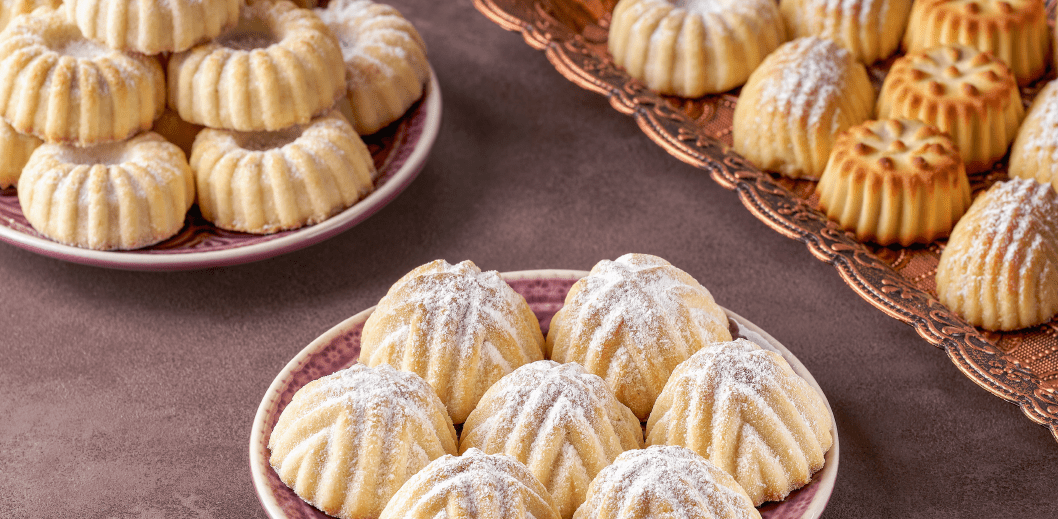
As the last days of Ramadan fade into the joyous celebrations of Eid, the tradition of sharing sweets remains. From the first bite of Luqaimat at iftar to the Ma’amoul gifted to loved ones, these desserts are more than just flavors—they are memories, connections, and symbols of generosity.
Whether made at home with family or bought from bustling souqs, each treat carries the essence of Ramadan’s warmth. As the crescent moon signals the arrival of Eid, the spirit of sharing and sweetness stays with us, reminding us that the best moments are those we savor together.
FAQs
What are the most popular Saudi desserts in Ramadan?
Luqaimat, Qatayef, Ma’amoul, Kunafa, and Hanini are some of the most beloved Ramadan treats.
Where can I buy traditional Saudi desserts during Ramadan?
You can find them in local bakeries, street vendors, and traditional markets like Souq Al-Zal in Riyadh and Al-Balad in Jeddah.
Are there healthier alternatives to traditional Ramadan desserts?
Yes, options like milk-based desserts, fruit-based sweets, and smaller portions can help balance indulgence with nutrition.
What Saudi desserts are best for gifting during Ramadan?
Ma’amoul, Kunafa, and Luqaimat are popular gifts, often packaged beautifully and shared with loved ones.
Can I make Saudi Ramadan desserts at home?
Absolutely! Many recipes are simple and use common ingredients like flour, dates, and honey, making them easy to recreate at home.

